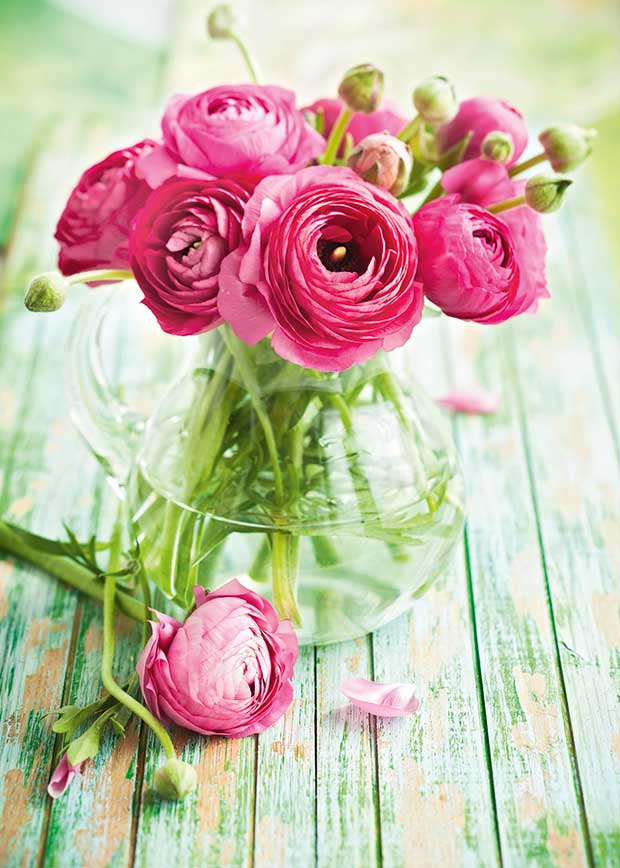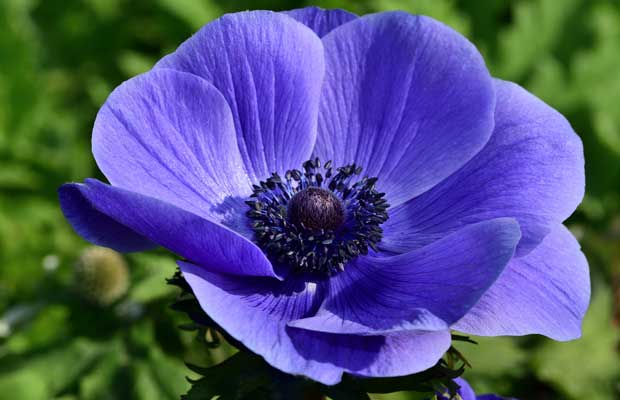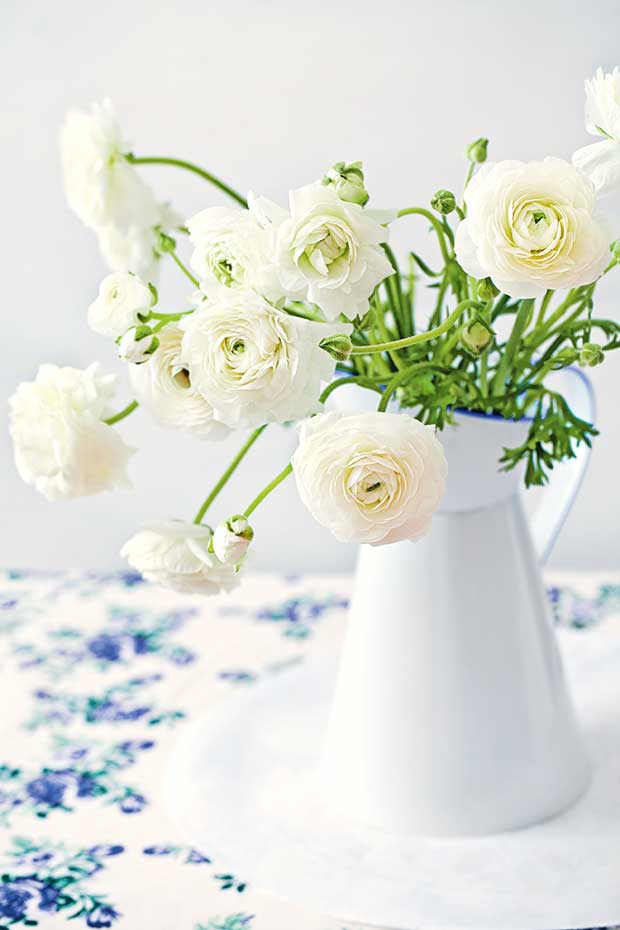The best time to plant spring flowers anenomes and ranunculus

Prepare beauties like anenomes and ranunculus in March for a spring filled with gorgeous flowers.
Words: Jane Wrigglesworth
Not all plants gardeners refer to as ‘bulbs’ are truly bulbs. People often confuse bulbs with corms, rhizomes and tubers.
All three are bulb-like. They have underground storage organs that function in the same way as bulbs, and their springtime blooms are as beautiful as true bulbs.
‘True’ bulbs include daffodils, tulips, hyacinths, grape hyacinths, liliums and snowdrops. Corms look like bulbs but don’t have the fleshy scales inside (freesias, gladioli, crocus, and autumn crocus). Lily-of-the-valley and irises grow from rhizomes, and
two of my favourites – anemones and ranunculus – grow from tubers.
All thrive in virtually any type of free-draining soil. Most like sun. Some, like bluebells, grape hyacinths, snowflakes, scilla and crocuses, will grow in dappled shade.
ANEMONES
To break dormancy and encourage germination and good flower production, anemone tubers need a period of exposure to cold temperatures, called vernalisation.
It happens naturally in cooler climates when the tubers are planted outdoors in autumn. If you’re in an area with mild winters, give yours a six-week spell in the fridge in paper bags (away from your fruit and vegetables). Soak for a few hours in tepid water before planting out.

A purple anemone in full bloom.
Plant in full sun or light shade, with the pointy tip downwards, in moist, free-draining soil, around 2.5cm deep and 5cm apart. If you stagger your planting, anemones will bloom from mid-to-late winter to late spring-early summer, depending on where you live.
Those in shade will have longer stems (up to 10cm longer) but the quality of the flowers will not be affected.
Feed regularly for continuous blooms. Anemones are treated as annuals in commercial production. In the home garden you should get another season, albeit fewer flowers, from your tubers. The flowers last 4-6 days in the vase.
RANUNCULUS
Ranunculus also need chilling in areas with mild winters (four weeks in the fridge), and a soak in tepid water before planting out.
Some commercial flower growers soak the dry tubers in running water for 4-6 hours, adding a fungicide treatment during the last 20 minutes. The tubers are then planted in a tray of damp perlite or vermiculite and placed in a cooler. After 3-4 weeks, those tubers that have produced shoots are planted out.

Ranunculus is stunning in a vase or the garden.
For a home gardener, it’s easiest to chill the tubers in the fridge, then soak them for 2-4 hours before planting out. Plant 2.5-5cm deep with the claws facing down, and 15-20cm apart. Don’t plant any closer, as crowded tubers often rot.
Like anemones, ranunculus should be fed regularly for strong, continuous blooms, about once a fortnight.
Pick your blooms when the buds begin to show colour. They will last 10-14 days in the vase.
Love this story? Subscribe now!
 This article first appeared in NZ Lifestyle Block Magazine.
This article first appeared in NZ Lifestyle Block Magazine.
